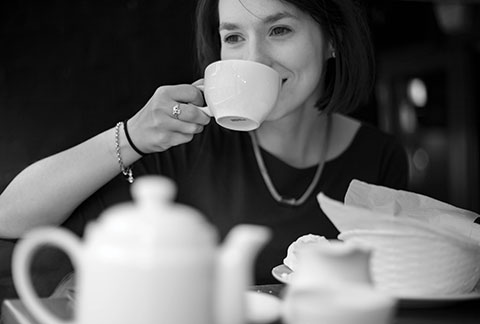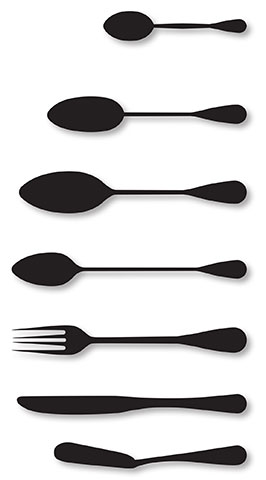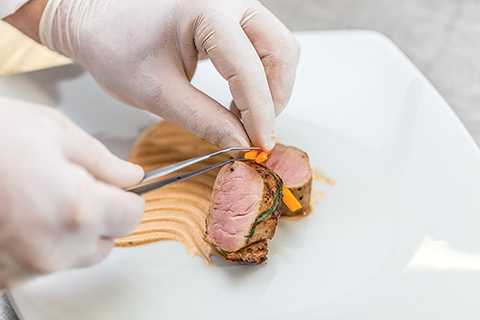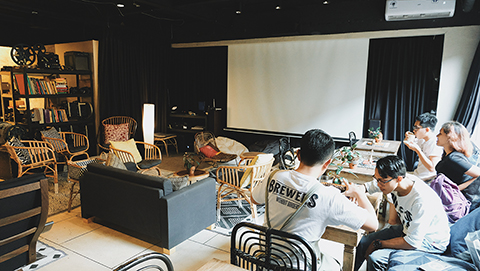
Coffee and coffeeshops are pretty much a cultural interpretation. Depending on where you are, you’ll see people meeting up and mingling over the strong, dark beverage or treating it as a pitstop to grab their daily drink. Cafes now have definitely evolved to serve more than just coffee and the menu plays to non-coffee drinkers with creative takes on tea and juices. As coffee cups was covered earlier and being on the topic of drink-centric operations, EAT-SSENTIALS will take a look at the various vessels for drinks and smallware important for a niche establishment.
TEA SERVICE
 If serving tea from a teapot, choose a pot according to the number of cups it will pour; typically 1-6 cups. Clear glass teapots are great visual pleasers if you enjoy watching the tea leave unfurl and to avoid sipping on the leave, strainers will come with the pot. Strainers are made of glass, plastic or gold mesh and some opine that glass would have the least impact on the tea’s flavour. Remember to provide guests with a tong or insulated cloth to remove the glass infusers.
If serving tea from a teapot, choose a pot according to the number of cups it will pour; typically 1-6 cups. Clear glass teapots are great visual pleasers if you enjoy watching the tea leave unfurl and to avoid sipping on the leave, strainers will come with the pot. Strainers are made of glass, plastic or gold mesh and some opine that glass would have the least impact on the tea’s flavour. Remember to provide guests with a tong or insulated cloth to remove the glass infusers.
 Ceramic teapot would be the most traditional one and has good natural heat-retention proper ties, low seepage and quick brewing time. A slightly narrow spout pours better than a too-wide opening. Perhaps more suitable for use in a authentic tea house as the pots have to be fired at low temperatures for brewing.
Ceramic teapot would be the most traditional one and has good natural heat-retention proper ties, low seepage and quick brewing time. A slightly narrow spout pours better than a too-wide opening. Perhaps more suitable for use in a authentic tea house as the pots have to be fired at low temperatures for brewing.
 Porcelain is usually associated with the bluish-white pots of China that first appeared in the late 1200s in China. The world only caught on to porcelain around the 17th century and were made by potters in USA, UK, France, Germany, Czechoslovakia, Russia and Austria. Today’s porcelain pots and cups cover a wide range of prices to suit every budget.
Porcelain is usually associated with the bluish-white pots of China that first appeared in the late 1200s in China. The world only caught on to porcelain around the 17th century and were made by potters in USA, UK, France, Germany, Czechoslovakia, Russia and Austria. Today’s porcelain pots and cups cover a wide range of prices to suit every budget.
 For a little charm to tea service, a tea ball infuser can be used to fill loose-leaf teas that you can mix with different things like herbs and other tea to create new flavours. It would include a stainless steel chain for easy removal and provides less waste from tea bags.
For a little charm to tea service, a tea ball infuser can be used to fill loose-leaf teas that you can mix with different things like herbs and other tea to create new flavours. It would include a stainless steel chain for easy removal and provides less waste from tea bags.
GLASSES
 Take-out Carriers:
Take-out Carriers:Don’t leave guests stumbling over their takeaways by providing cup carriers. They usually look like egg trays, are heat resistant and allow safe transportation of drinks; or can double up as snack holders.
 Necessary for serving water,
Necessary for serving water,establishments usually go for clear simple straight sided glasses or paneled ones. If water is refillable; maybe you’d consider going for higher volume ones like 8-10 ounce ones to save the waitstaff’s leg work. Meanwhile, have also a stock of all-purpose glasses for specialty drinks such as flavoured ice tea and juices to provide a nice visual touch and is recommended that they hold more than the water glass. Small cafes would probably not require that many types of glasses but know what is important and expand from there.
CONDIMENT SET
 Cafes may choose to place all the condiments at one area; preferably on the way out of the drink pick-up area for self-service or have them available on each table. For the latter; the option of packaged sugar and creamer is definitely cost savings but if beverages are the core of your business, investing a little bit more on smallware can add the premium and personal touch on the table.
Cafes may choose to place all the condiments at one area; preferably on the way out of the drink pick-up area for self-service or have them available on each table. For the latter; the option of packaged sugar and creamer is definitely cost savings but if beverages are the core of your business, investing a little bit more on smallware can add the premium and personal touch on the table.
DESSERT PLATE
 Might be called ‘luncheon’ plates by some manufacturers and are sized between 7.25 to 8.5 inches in diameter and tend to have unique decorations instead of plain white. Due to desserts usually being associated with anticipation and excitement, these plates may come in various colours and shapes to inject more fun.
Might be called ‘luncheon’ plates by some manufacturers and are sized between 7.25 to 8.5 inches in diameter and tend to have unique decorations instead of plain white. Due to desserts usually being associated with anticipation and excitement, these plates may come in various colours and shapes to inject more fun.
FLATWARE (CUTLERIES)
 Grading of flatware is usually divided in three classes. They include medium weight which are the lightest and most economical – the default choice in mass volume dining halls though easily bendable (cheap to replace too). Mid – level eateries usually go for heavy weight for its better durability and looks while extra heavy weight flatware are used by fine food establishments for its sturdiness and premium feel in the hand. Whichever quality you choose; these are the basic flatware a cafe serving drinks and desserts or small items should have.
Grading of flatware is usually divided in three classes. They include medium weight which are the lightest and most economical – the default choice in mass volume dining halls though easily bendable (cheap to replace too). Mid – level eateries usually go for heavy weight for its better durability and looks while extra heavy weight flatware are used by fine food establishments for its sturdiness and premium feel in the hand. Whichever quality you choose; these are the basic flatware a cafe serving drinks and desserts or small items should have.
 Demitasse Spoon: the tiny flatware designed with a longer handle and a slightly smaller bowl for stirring coffee drinks of small volumes like espresso or cappucino.
Demitasse Spoon: the tiny flatware designed with a longer handle and a slightly smaller bowl for stirring coffee drinks of small volumes like espresso or cappucino.Teaspoon– the 6-inch spoon is a definite must for coffee and tea to desserts, cereal and even soup.
Dessert Spoon: a little longer than the teaspoon by 1-inch, it’s surface area is also wider and deeper, making it easier for guests to enjoy sweet treats.
Iced Tea / Soda Spoon:long and thin handle with a small, oval-shaped bowl adequate for stirring tall and/or creamy drinks.
Dessert Fork:being smaller than the average dining fork, it is used for eating cakes and pies or even salad.
Butter Knife:Either one with a full edge and a rounded point or one with a rounded tip and flat blade will be required if your service includes items with spreads.










